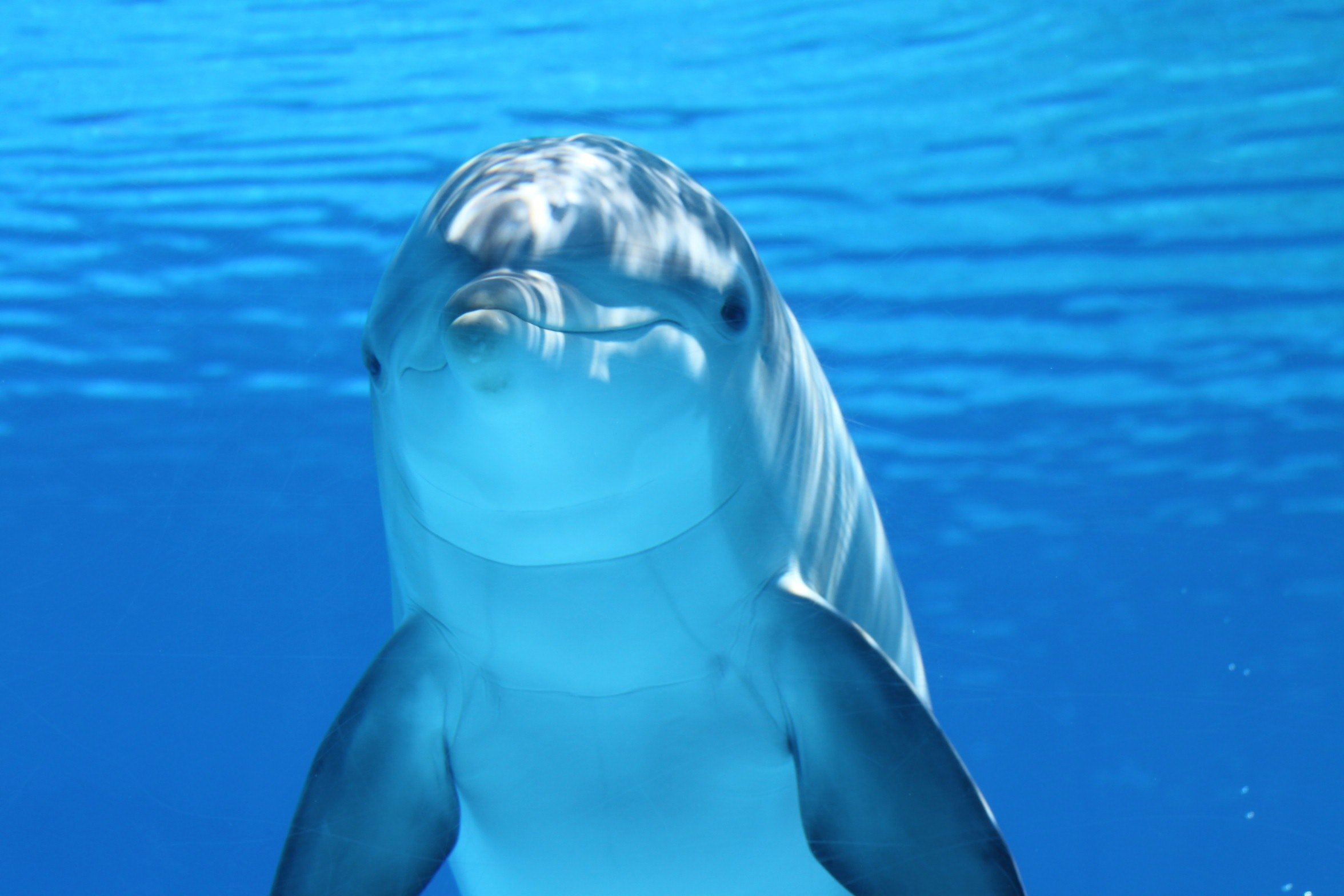
Underwater Photography
As the name suggests, Underwater Photography is the process of taking images while submerged. Often done by scuba divers, it is also practiced by surface swimmers and specialized boats.
In addition to being a visual art form, underwater photography is used to capture a vast array of data that is utilized by biologists, geologists and military scientists. Successful underwater imaging often requires specific tools, procedures, and detailed planning. It presents fascinating and uncommon imaging opportunities that cannot be found anywhere else. Popular artistic themes include marine animals, coral reefs, shipwrecks, and underwater caves.
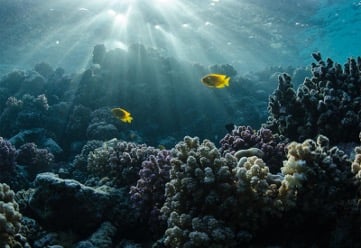
Figure 1.0 Coral Reef
Credit: Nature TTL
Equipment
Professional photographers use cameras designed exclusively for use underwater, but non-waterproof cameras can function adequately with the right tools. Water-proof underwater housings are available for many standard cameras that give the user access to most of his camera’s standard features, thanks to control knobs and buttons that extend to the camera.
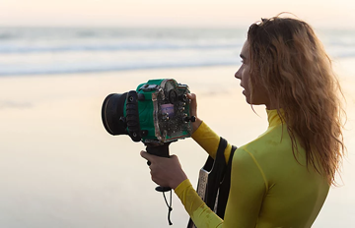
Figure 2.0 Underwater Waterproof Housing for Camera
Credit: Adobe
Refraction
Wide-angle and macro lenses are frequently used by underwater photographers because they allow for a closer focus with resultant improved clarity. However, the user needs to keep in mind that shooting through an underwater housing can bring about its own set of optical issues.
Refraction causes the picture to be distorted when it passes through the glass port, especially when using wide-angle lenses. Unless the rays of light are perpendicular to the glass interface, they are bent as they pass from one medium to another. Interestingly, refractional distortion is not an issue with macro lenses. In this case, the housing increases a macro lens's magnification, which is advantageous for photographers attempting to capture extremely small subjects.
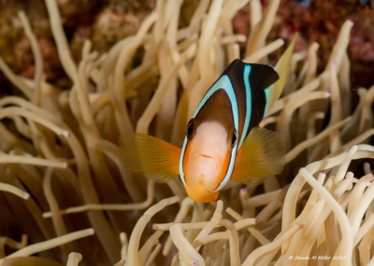
Figure 3.0 “Clark’s Anemonefish” captured with macro lens
Credit: Shawn M Miller, 2015
Obstacles and Solutions
As you might guess, the taking of photographs underwater has a number of unique obstacles that don’t come into play on land. All fluid environments experience continuous internal movements, but these are rarely evident in air. Water’s higher index of refraction magnifies the effect and makes photographing moving objects challenging as they may appear hazy.
In addition, water contains tiny particles and debris, both visible and invisible to the naked eye, which causes backscatter and gives the impression that the image is dusty or unclean. Fortunately, backscatter can be easily corrected by using a flash device and aiming it properly. Keep the flash away from the lens and at a 45-degree angle, above and to the side of the subject. Shooting close-up is another method to mitigate backscatter by reducing the amount of water between the subject and lens.
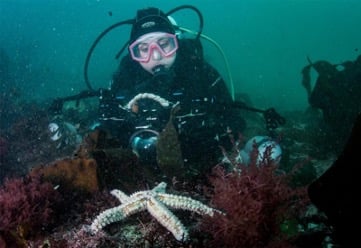
Figure 4.0 Backscatter in underwater photography
Credit: Nature TTL
When underwater, the vibrancy in color diminishes. This is due to the fact that water is 800 times denser than air, which causes it to absorb light much faster. Water acts like a filter upon colors, absorbing and distorting the majority of warm tones and giving them a monochrome bluish tint. More colors are filtered out the deeper you go. This is known as “color loss”. At around 5 meters, red almost completely vanishes, then orange at 10 meters, yellow at 20 meters, green at 30 meters, and finally blue at 60 meters.
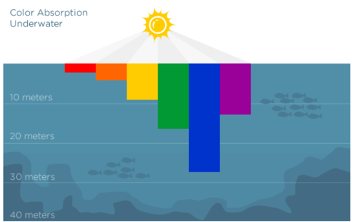
Figure 5.0 Color Absorption Underwater
Credit: http://www.lymanlures.com/pyramid-lake-report-april-24
Luckily, there are a few methods that can be used to overcome color loss underwater, the first by using a red or magenta color-correcting filter. These filters limit the blue color component and help return those hues back in the water. For depths between 30 and 45 feet, red filters are ideal. But if you go deeper than that, it won't be enough, and if you go shallower, it could be too powerful.
The most crucial component of a picture is light, and adding light helps an image convey the right tone or desired impact and this accomplished with a strobe or flash device. Strobes create daylight-balanced light that helps restore color to photographs, highlight textures, preserve details and establish contrast. Strobes may be used to provide light where shadows reign or they may be the primary source of lighting for underwater photographs.
Professionals employ these methods in conjunction with one another to create optimal setting for underwater photography.
Conservation
The glory of underwater photography is that it illustrates the wonders of marine life and environment to people who have never experienced it and educates them on the importance of conservation. These days, most research on ocean preservation relies on a handful of scientists and organizations to study and track it over time. The unique benefit is that underwater photographers are able to contribute to conservation by submitting their images to online databases. Receiving images from 'citizen scientists' such as divers and snorkelers adds significant volunteer manpower and greatly improves data quantities, allowing scientists and conservation groups to learn more about each species in shorter time periods.
Nicholas Samaras is an award-winning photographer and one of the most passionate and committed underwater photographers worldwide. The photo below is one from his library capturing the unfortunate spread of garbage in our ocean waters.
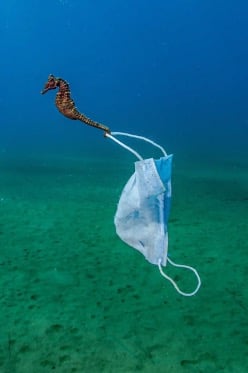
Figure 6.0 A seahorse that has anchored itself to a face mask, Halkidiki peninsula, Greece. Photographer Nicholas Samaras dives regularly in the area and says Covid waste is the biggest recent change. Photograph: Nicholas Samaras
You see, the benefits of ocean photography extend beyond capturing stunning images. It sheds light on the wonders of the ocean, the realities of it, and contributes to research on how to preserve it. The language of photography makes it a particularly effective method for communicating the message of conservation to people all around the world. Photography may present conservation challenges in a way that’s captivating and easy to understand. All in all, it tells a story to the viewer.
Wrap Up
While photographing underwater takes skill and expertise, it reaps rewards. The different facets of technology and optics used in accomplishing underwater photography have opened up another world that we can’t easily see. These solutions, in turn, give scientists and researchers the tools to explore life underwater and share their findings with others. Andover Corporation can provide you with ideal optical filters for your next underwater photography adventure.
Resources:
https://www.deepblu.com/mag/index.php/2018/01/03/10-common-underwater-photography-beginner-mistakes/
https://steemit.com/photography/@scottdphoto/let-there-be-light-basic-principles-of-light-underwater
https://en.wikipedia.org/wiki/Underwater_photography
https://blog.padi.com/saving-the-ocean-with-underwater-photography/
